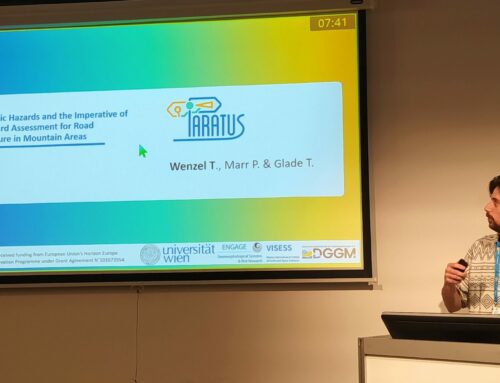The year 2023 has brought a multitude of landslides in Austria, largely due to regionally significant rainfall. Climate change is expected to make such years more frequent in the future. A team led by Vienna-based geomorphologist Thomas Glade is working on a new vision for hazard and risk assessments, as well as forecasting. Given the current data available, it is entirely feasible to establish an early warning system in Austria.
As part of their “MoNOE” project, the team developed a hazard warning map for landslides and rockfall processes using a standardized methodology for the entire Lower Austria region, as explained by Glade in an interview with APA. This map incorporated data on over 13,000 documented landslides up to the year 2015. Subsequently, experts in risk prevention and disaster management at the University of Vienna compared more than 400 events that occurred in Lower Austria since then with their detailed hazard warning maps.
The result: 90 percent of these events occurred in the predicted vulnerable zones. The remaining events occurred almost exclusively in close proximity – within ten to 50 meters – to these areas. This finding is highly promising for Glade: “This is more or less a bullseye.” It allows for identifying areas “where nothing has happened so far, but where there are potential hazards in the future.” However, such a uniform, comparable picture across all municipal boundaries, as achieved in collaboration with the Lower Austrian authorities, is by no means present in all federal states.
Still Some Way to Go from a “Hazard Map”
However, a comprehensive system that can assess the regional probability of landslides in real-time and provide information about the potential size and recurrence likelihood of such events – a true “hazard map” – is still some way off. To create a “risk map,” there would need to be an additional assessment of whether, how often, and to what extent roads, houses, or people would be affected, in other words, what the potential consequences of the landslides would be.
The need for such a system is clear: This year’s summer has vividly demonstrated that landslides are becoming more frequent due to climate change, the forced reorganization of many natural areas, and the increasing weather extremes. Glade says, “I am even more convinced after this year that these events will increase. Extremes are becoming more extreme.” This would be an additional argument to comprehensively address the issue nationwide.
“Multi-Hazards” Leading to “Cascade Effects”
Glade and his team are considering incorporating current and future rainfall data into real hazard and risk maps. Furthermore, they believe it’s essential to better understand and estimate complex interactions: When landslides reach river channels, they can subsequently lead to debris flows, which, in turn, can block rivers or load them with a substantial amount of debris and sediment. These “multi-hazards” continue in “cascade effects.” Modeling all of this in a large-scale, precise manner would be a scientific challenge, but one that is manageable and being worked on, according to Glade.
Once this information is available and regional rainfall forecasts can be accessed in real-time, probabilities for various scenarios can be provided. This would enable warnings about which specific slopes are at risk of landslides given actual rainfall amounts tomorrow or the day after. Currently, such assessments are mostly made by on-site experts, whose expertise may not always be available at the right time. In such cases, an objective assessment could provide support, says the researcher, who advocates for more proactive thinking rather than reactive responses.
Service: Work on a nationwide hazard warning map: https://dx.doi.org/10.1007/s10346-021-01693-7; Research project on the topic of “Cascade Effects” in Europe: https://www.paratus-project.eu; Information about the research group at the University of Vienna: https://geomorph.univie.ac.at or https://extrema.univie.ac.at.
Original Source: Austrian Press Agency 13.09.2023; https://science.apa.at/power-search/12489977694136860564



